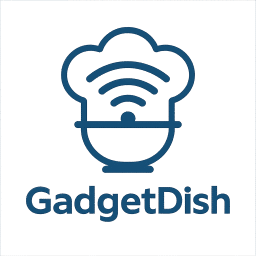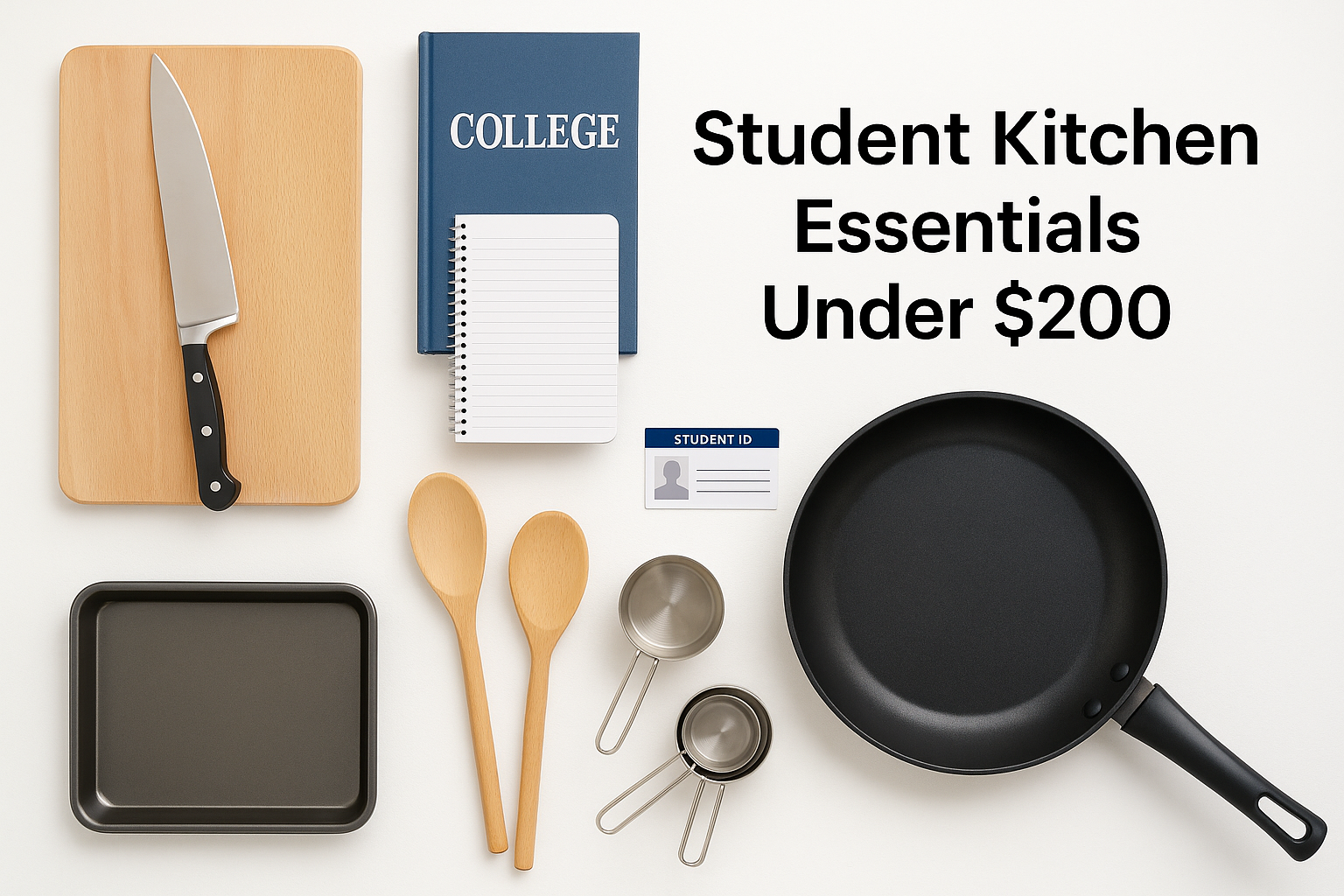Moving into your first apartment as a student marks an exciting milestone of independence, but the prospect of stocking a kitchen from scratch can feel overwhelming. Between tuition costs, textbooks, and rent, the budget for kitchen equipment is often tight. However, cooking at home is one of the most effective ways to stretch your student budget while maintaining better nutrition than relying solely on dining halls or takeout.
This comprehensive guide breaks down the absolute must-have kitchen items that will enable you to prepare healthy, affordable meals without breaking the bank. We’ll prioritize versatile, durable items that maximize your investment while fitting into typical student living situations – from tiny studio kitchens to shared apartment spaces.
The Student Kitchen Reality Check
Before diving into specific recommendations, it’s important to understand the unique constraints of student living. Your kitchen space is likely smaller than what you’re used to at home, storage is limited, and you’re probably sharing appliances and counter space with roommates. Additionally, you’ll be moving frequently – potentially every semester or academic year – making portability and durability crucial factors.
The key is focusing on multi-functional items that can handle various cooking tasks while remaining budget-friendly and easy to transport. Every item on this list serves multiple purposes, ensuring you get maximum value from each purchase.
Essential Cooking Tools (Priority Level: Must-Have)
1. Sharp Chef’s Knife ($25-40)
Buy on Amazon amzn.toA quality 8-inch chef’s knife is your most important kitchen investment. This single tool handles 90% of cutting tasks, from chopping vegetables to slicing proteins. A sharp knife is safer than a dull one and makes cooking exponentially more enjoyable and efficient.
Why it’s essential: Replaces multiple specialty knives, speeds up food prep significantly, and encourages cooking by making ingredient preparation less tedious. A good knife will last through your entire college career and beyond.
Budget pick: Victorinox Fibrox Pro 8-inch Chef’s Knife offers professional performance at student-friendly pricing. The textured handle provides excellent grip even when wet.
2. Cutting Board ($15-25)
Buy on Amazon amzn.toChoose a medium-sized plastic cutting board that’s dishwasher-safe and won’t dull your knife. Plastic boards are lighter for moving, easier to sanitize, and more durable in shared living situations than wood alternatives.
Smart features to look for: Non-slip feet or texture on the bottom, juice groove to contain liquids, and size that fits in your sink for easy cleaning. Consider boards with different colors for meat and vegetables if food safety is a priority.
3. Large Nonstick Skillet ($30-50)
Buy on Amazon amzn.toA 10-12 inch nonstick skillet handles everything from scrambled eggs to stir-fries. The nonstick surface requires minimal oil, making cleanup easier – crucial when you’re sharing kitchen space and time is limited between classes.
Versatility factor: Perfect for eggs, pancakes, grilled cheese, sautéed vegetables, quick pasta dishes, and even makeshift pizza reheating. The large size accommodates cooking for friends or meal prep portions.
Care tip: Use silicone or wooden utensils to preserve the coating, and avoid putting it in the dishwasher to extend its lifespan through multiple moves.
4. Medium Saucepan with Lid ($25-35)
Buy on Amazon amzn.toA 2-3 quart saucepan with a tight-fitting lid handles boiling pasta, cooking rice, making oatmeal, heating soups, and preparing simple sauces. The lid is crucial for efficient cooking and water conservation.
Multi-use applications: Doubles as a small stockpot for pasta, serves as a steamer with a colander insert, and can even function as a mixing bowl when cooking space is limited.
5. Wooden Spoons and Silicone Spatula Set ($10-15)
Buy on Amazon amzn.toWooden spoons won’t scratch your nonstick pans and are perfect for stirring everything from pasta sauce to scrambled eggs. A flexible silicone spatula ensures you can scrape every bit of food from pans and bowls – important when you’re maximizing every ingredient.
Why these materials matter: Heat-resistant, gentle on cookware, and dishwasher-safe (for silicone). Wooden spoons are inexpensive to replace and won’t conduct heat, preventing burned fingers.
Food Storage and Preparation (Priority Level: Highly Recommended)
6. Glass Food Storage Containers ($20-30)
Buy on Amazon amzn.toInvest in a set of various-sized glass containers with airtight lids. These serve multiple purposes: food storage, meal prep containers, mixing bowls, and microwave-safe serving dishes. Glass won’t absorb odors or stains like plastic alternatives.
Student-specific benefits: Perfect for storing leftovers in shared fridges (less likely to be “borrowed”), stackable for efficient use of limited storage space, and durable enough to survive multiple moves.
Meal prep advantage: Cook large batches on weekends and portion into containers for grab-and-go meals between classes. This strategy saves both time and money during busy weeks.
7. Large Mixing Bowl ($8-15)
Buy on Amazon amzn.toA large stainless steel or plastic mixing bowl handles salad preparation, mixing ingredients for baking, marinating proteins, and serving large portions when entertaining friends. Choose one that nests inside your other bowls for space-saving storage.
Size matters: Go larger than you think you need – it’s easier to use a large bowl for small tasks than trying to fit large quantities in a small bowl. A 4-5 quart capacity handles most student cooking needs.
8. Colander/Strainer ($10-15)
Buy on Amazon amzn.toEssential for draining pasta, washing vegetables, and straining canned goods. Look for one with a stable base and handles that fit over your sink. A collapsible version saves storage space in tiny kitchens.
Multi-functional uses: Steaming vegetables (placed over boiling water), storing fruits and vegetables that need air circulation, and even as a makeshift salad spinner for washing greens.
Small Appliances That Make a Difference
9. Electric Kettle ($20-35)
Buy on Amazon amzn.toFar more versatile than just making tea or coffee, an electric kettle is a student’s secret weapon. It boils water faster than stovetop methods, uses less energy, and enables quick meal preparation even in the smallest spaces.
Creative applications: Instant oatmeal, ramen noodles, steaming vegetables, hard-boiling eggs, and even cooking pasta in a pinch. Some students use kettles for entire meals when cooktop access is limited.
Energy efficiency: Uses less electricity than heating large pots of water on electric stoves, helping keep utility costs down in apartments where you pay electricity bills.
10. Mini Rice Cooker ($25-40)
Buy on Amazon amzn.toA small rice cooker (3-4 cup capacity) provides foolproof results for rice, quinoa, and other grains. Many models include steamer baskets for vegetables, making them incredibly versatile for healthy, budget-friendly meals.
Set-and-forget convenience: Perfect for busy student schedules – add ingredients, press start, and focus on studying while your meal cooks. No risk of burning or overcooking like stovetop methods.
Beyond rice: Cook quinoa, steam vegetables, make oatmeal, and even prepare one-pot meals with proteins and vegetables. Some students use them for hard-boiling eggs or warming leftovers.
Budget-Friendly Basics (Priority Level: Nice to Have)
11. Can Opener ($5-10)
Buy on Amazon amzn.toA reliable manual can opener is essential for accessing canned goods – a staple of budget-conscious student cooking. Choose one with comfortable handles and sharp cutting wheels that won’t leave dangerous metal shards.
Why manual over electric: Takes up minimal storage space, never needs repairs, works during power outages, and costs a fraction of electric models.
12. Measuring Cups and Spoons ($8-12)
Buy on Amazon amzn.toAccurate measurements are crucial for successful cooking and baking. Choose plastic or stainless steel sets that nest together for compact storage. Having proper measurements prevents food waste from failed recipes.
Student hack: Many ingredients can be measured by weight rather than volume, so consider a small digital scale ($15-20) as an alternative that takes up less space and provides more accuracy.
13. Dish Towels and Pot Holders ($10-15)
Buy on Amazon amzn.toOften overlooked but essential for safety and cleanliness. Microfiber dish towels dry quickly and don’t harbor bacteria like traditional cotton towels. Heat-resistant pot holders or silicone gloves protect your hands from burns.
Practical considerations: Choose dark colors that hide stains, buy multiple sets so you always have clean ones available, and look for quick-drying materials that work well in humid dorm or apartment conditions.
Smart Shopping Strategies for Students
Where to Find the Best Deals
Thrift stores and consignment shops: Excellent for finding quality cookware at fraction of retail prices. Look for cast iron, stainless steel, and glass items that last forever. Avoid nonstick items from thrift stores as the coatings may be damaged.
End-of-semester sales: Many graduating students sell kitchen items at deeply discounted prices. Check campus bulletin boards, Facebook marketplace, and student housing areas during move-out periods.
Dollar stores for basics: Perfect for measuring tools, basic utensils, dish towels, and food storage containers. Quality varies, so inspect items carefully before purchasing.
Online retailers: Amazon, Walmart, and Target often have student discounts and back-to-school sales. Subscribe to price alerts for items on your wish list.
Timing Your Purchases
Back-to-school season (July-August): Retailers offer student-focused sales and bundles. This is the best time to stock up on essentials.
Post-holiday sales (January): Kitchen items often go on clearance after the holiday cooking season. Perfect timing for spring semester moves.
End of academic year (May-June): Students selling belongings before moving create opportunities for secondhand bargains.
Building Your Kit Gradually
Phase 1: Immediate Needs ($100-150 budget)
- Chef’s knife and cutting board
- Large nonstick skillet
- Medium saucepan with lid
- Basic utensils (wooden spoons, spatula)
- Electric kettle
This combination enables basic cooking immediately and handles most student meal needs.
Phase 2: Expanding Capabilities ($75-100 additional)
- Food storage containers
- Mixing bowl and colander
- Rice cooker or slow cooker
- Measuring tools
Add these items as budget allows, focusing on pieces that address your most frequent cooking challenges.
Phase 3: Nice-to-Have Additions ($50-75 additional)
- Additional cookware (sheet pan, smaller skillet)
- Specialty tools (garlic press, vegetable peeler)
- Small appliances based on cooking interests
Maximizing Your Investment
Care and Maintenance Tips
Knife care: Hand wash immediately after use, store in a protective sheath or knife block, and maintain sharpness with a honing steel or professional sharpening service.
Nonstick preservation: Use wooden or silicone utensils, avoid high heat settings, and hand wash to extend coating life. Replace when food begins sticking consistently.
General maintenance: Clean items thoroughly before storing, dry completely to prevent rust or mold, and inspect regularly for damage that could affect food safety.
Moving and Storage Strategies
Packing efficiently: Nest bowls and containers inside each other, wrap knives safely, and use dish towels as padding for fragile items.
Inventory tracking: Keep a list of your kitchen items with purchase dates and prices. This helps with insurance claims if items are damaged during moves and helps you remember what you already own.
Real Student Success Stories
Many successful students have built impressive cooking capabilities with minimal investment. The key is focusing on versatile, quality basics rather than trying to replicate a fully-equipped home kitchen immediately.
Students report saving $200-400 per month by cooking at home instead of relying on meal plans and takeout. More importantly, developing basic cooking skills during college years creates healthy habits and practical life skills that last well beyond graduation.
The social benefits are significant too – cooking for friends, hosting study group dinners, and sharing meals creates connections and memories that enhance the college experience beyond academics.
Your Culinary Independence Starts Here
Building a functional student kitchen doesn’t require a massive investment or professional-grade equipment. With these essential items, you’ll have everything needed to prepare healthy, budget-friendly meals that fuel both your body and your academic success.
Start with the basics and add items gradually as your cooking confidence grows and your budget allows. Remember that learning to cook is a valuable life skill that extends far beyond your student years – the investment in quality basics pays dividends in health, savings, and personal satisfaction throughout your life.
Most importantly, don’t let the fear of not having everything stop you from starting. Even with just a knife, cutting board, and skillet, you can create satisfying meals that beat any dining hall offering. Your future self – and your bank account – will thank you for taking the first step toward culinary independence.

